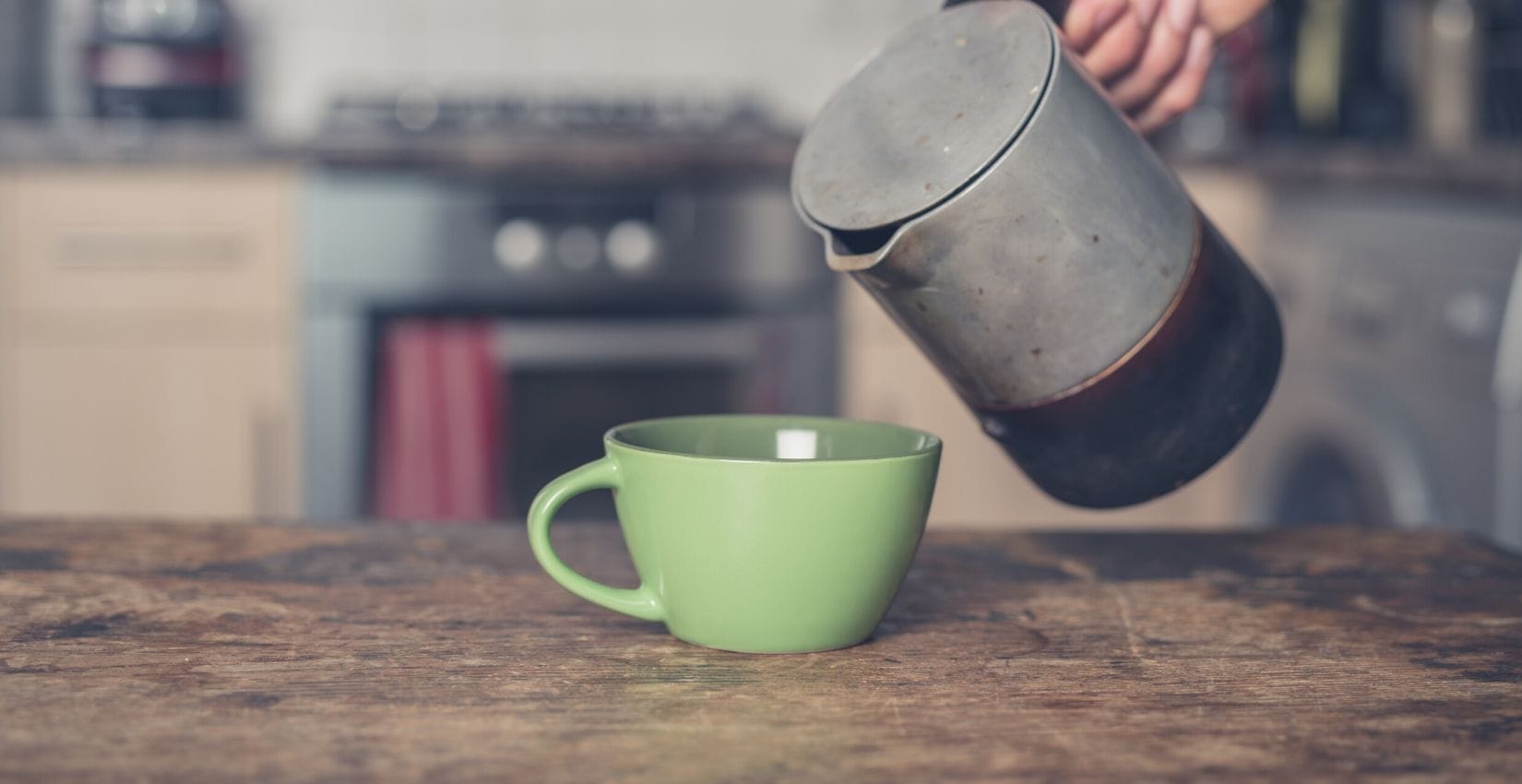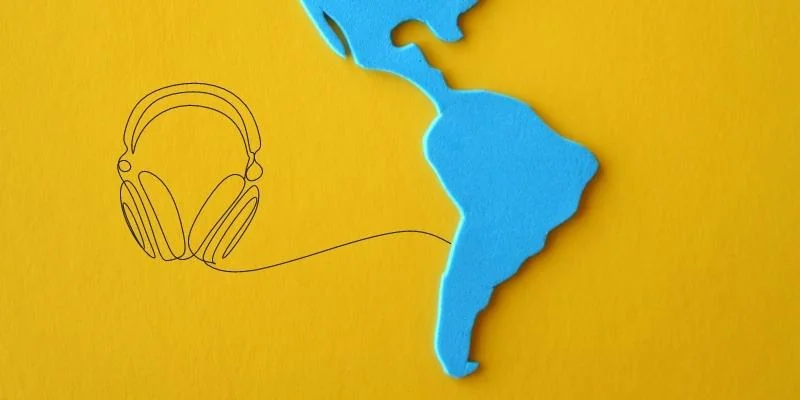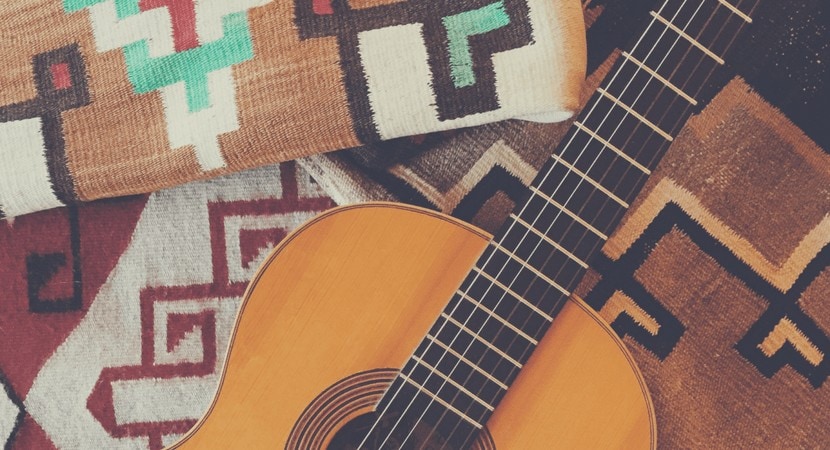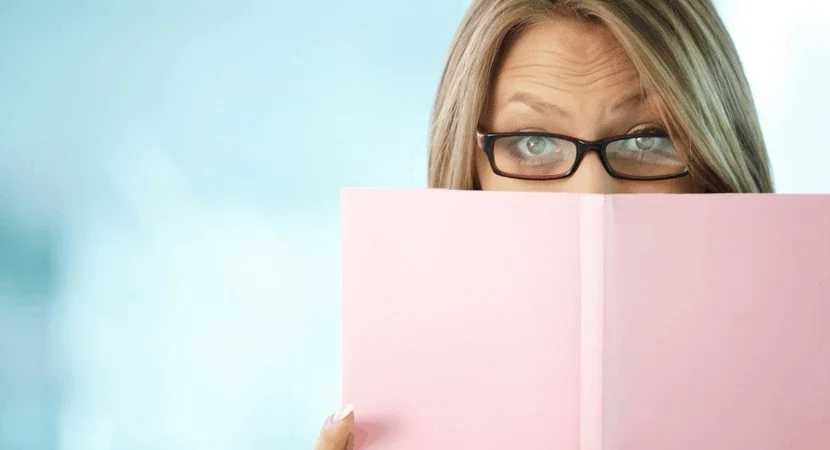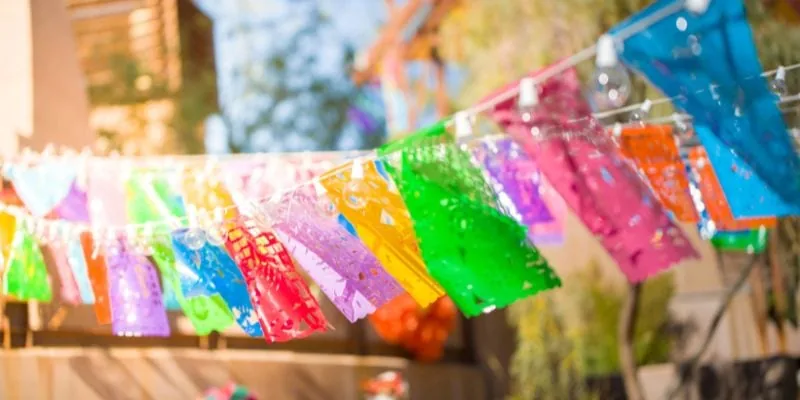Interviews With Non-Native Speakers, Teaching Their Kids Spanish
Inside: 5 families share how they are raising in or teaching their kids Spanish, as non-native speakers.
As I’ve sat down to write these interview posts, scrolling through the responses from each family, it’s felt like pulling up a chair their kitchen islands or tables. There’s nothing like hearing from other everyday families and how they’re making the Spanglish mix work!
When I talk to non-native Spanish speakers I feel that kinship quickly, because I’m not a native speaker either. For our early years of parenting, my Spanish-speaking husband worked long hours, sometimes only seeing the kids on the weekend, or even just Sunday. The bulk of the Spanish input fell to me.
While I felt pretty confident chatting away with friends, I realized that talking to babies and small children feels like a monologue. You use words they don’t cover in Spanish class– diaper, onesie, terms of endearment, baby talk. I had to study up on talking like a mom!
When we moved to Peru three years ago, I was excited to speak English with my kids, my mother tongue. Then this past March, Covid swept into even our small rural town, cancelling schools and play dates. Again, our language plan was turned on its head and we had to adapt. I switched to a more even mix of Spanish and English.

Related: How 5 Families Successfully Raised Bilingual Kids (It might not look like what you think!)
As our kids get older and conversations become more complex, I try to balance my desire to help their Spanish with my need to speak my heart-language with them. I know many other families are doing this juggling act too! These interview series are an excellent reminder that language goals are different with each family.
Here are the prompts each family responded to (you can click on the title to jump to that section of the interview):
- Please introduce yourself and your family.
- What does language look like in your home and what guidelines have you set up?
- What challenges have you faced?
- Where/how do you feel you have been most successful?
- What resources have helped you?
- What is your best advice to other families wanting to raise bilingual kids?
Let’s hear from our families!
The stories encourage me, and I bet they will you, too.
MEET OUR FAMILIES
Spanish Mama: Please introduce yourself and your family.
Sophie: Hi I’m Sophie. I’m from Sheffield, England. I live with my husband and 2 year old daughter, Alba. I’ve spoken to Alba in Spanish since she was born. I occasionally speak in English only if I don’t know the vocab – for example I didn’t know how to say hammer the other day when she asked ‘qué es’ to the banging next door.
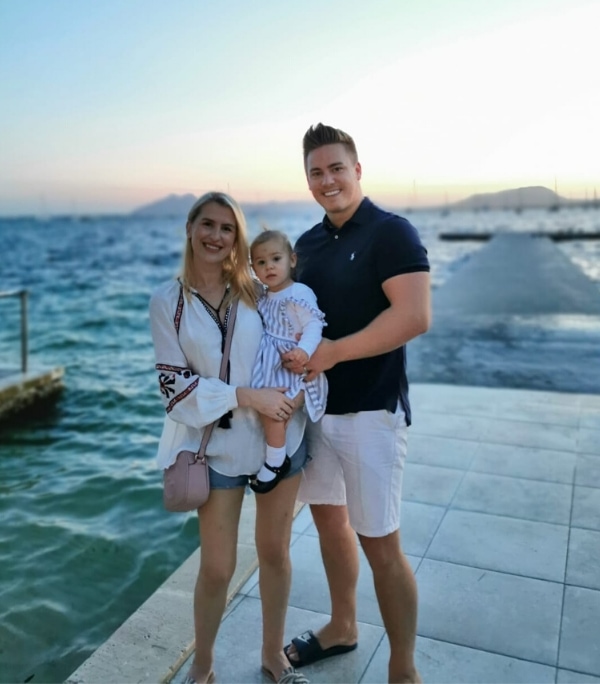
Sophie’s family
Chloe: Mama (Chloe), Papa (Andy) y Josh (un niño encantador de 2 años).
Danielle: My name is Danielle and my husband, Miguel, and I have been married for 12 years. I taught abroad for 8 years and we met in Guatemala while I was teaching in Honduras. We lived in Guatemala for 6 years and have now been in Denver for 6 years. We have a 2.5 year old son, Lucas.
My husband was born in Guatemala, but raised in the states. I grew up speaking French, but studied Spanish extensively while living in Central America.

Danielle’s family
Reina: My name is Reina and I am a single mother to a four year old daughter living in the United States. I am raising my daughter to be bilingual in Spanish and English because of the many benefits of being bilingual and the opportunities that it could give her as she got older.
I am a non-native Spanish speaker. I took Spanish in high school and felt like I didn’t really know Spanish that well. During college I studied for a semester in Argentina and then promptly forgot most of the Spanish I had learned! When my daughter was born, 6 years later, I decided to reteach myself Spanish and teach her at the same time. I just started blogging about our adventure on Becoming Bilingual.
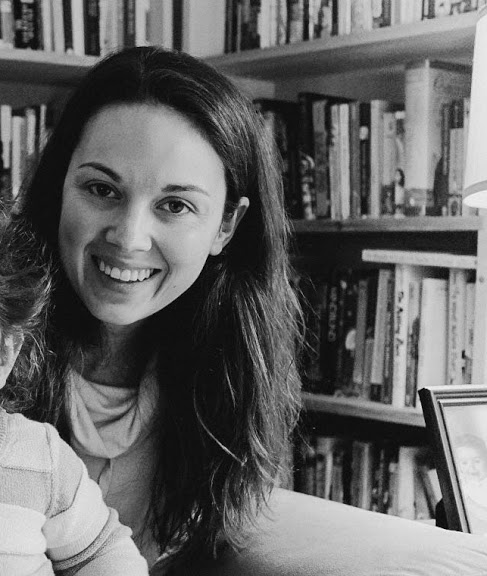
Reina
Adrienne: We are a family with 5 kids ranging from age of 15 to 3-year-old twins. I first had my sights set on having a bilingual family when my oldest daughter was 1-year-old. The idea wasn’t that far-fetched. My husband is fluent in Spanish, and at the time was working with banks in Latin America.
I thought that I could take a class at the community college, and he could help teach me. His corrections annoyed me quickly into the process, and I was burned out working part-time and being a new mom. I dropped out of the course on the fourth week and put the dream on the shelf.
When I had the bah-dum dum ching of my family (my twins!), I felt inspired to try again. This time I took a different approach. Wee have been learning the language together and connecting with native Spanish speaking families in our community. (You can follow me on IG at @learnwithmespanish)

Adrienne’s family
Amanda: My husband John and I have been married for five years and have two children, Moses (Moisés), 3 years old and Lorilyn, 17 months. We currently live in Orem, UT.
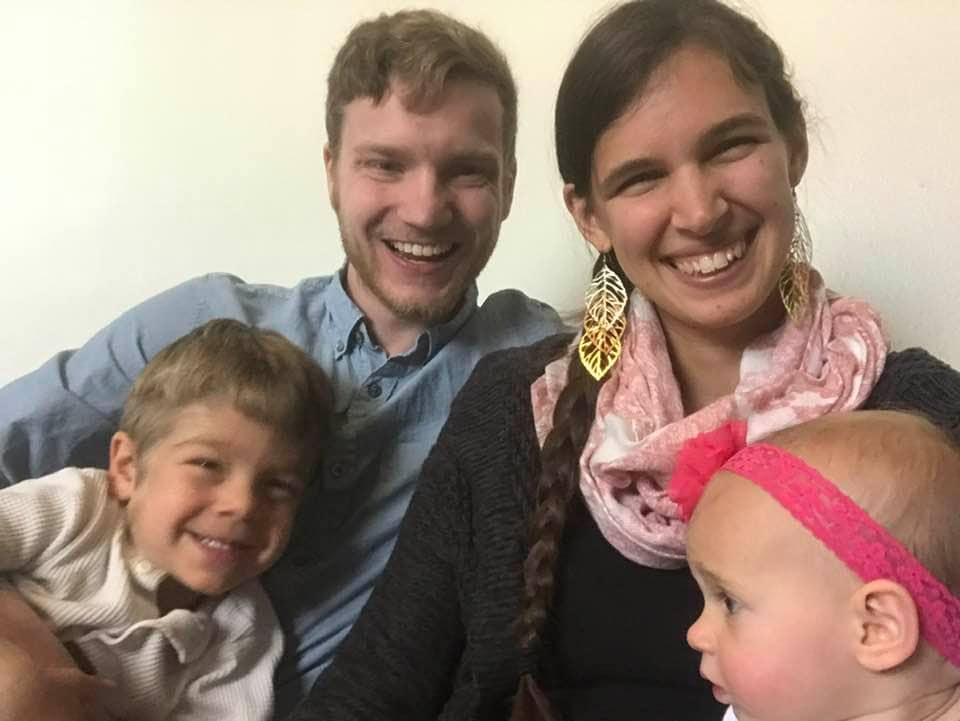
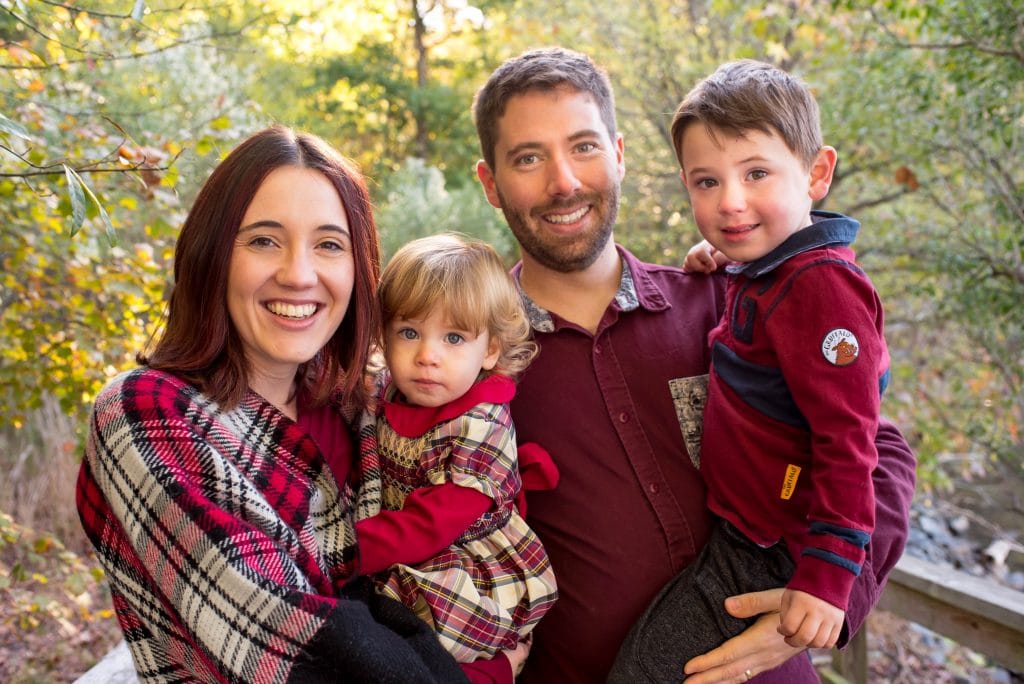
Corrie: Hola y’all! I’m Corrie, blogger and mama to two little nenes. Micah is 4 and Evelyn Rose is 2. I’m British but moved to the States in 2015. My husband is from San Diego, CA and is monolingual. We joke he speaks Spanglish! Now we live in South Carolina (hence the y’all!). I studied Spanish at University and lived in Spain for a year teaching English. I was a Spanish High School teacher in England and also in California for a few years but decided to stay home after having my first baby. (You can find me on IG as @mamallamalinguist and @mamallamabookclub .)
THE SPANGLISH MIX
Spanish Mama: What does language look like in your home and what guidelines have you set up?
Sophie: At home I speak to my daughter in Spanish and her dad speaks to her in English. I’m not a native speaker, I have a degree in Spanish and lived in Cádiz, Spain for two years and I am a Spanish teacher here in Sheffield. I am the only source of Spanish that she has as I don’t know any other Spanish speakers where we live and no one in the family speaks Spanish. It was just really important to me to try to teach her Spanish to open up as many possibilities as possible for her, and it’s such a beautiful language.
Chloe: We, the parents, are both native English speakers (born and raised in the UK). Dad only speaks English, whereas I (Mum) learnt various languages at school including Spanish which I studied at University, did an exchange year in Barcelona and continue to use Spanish for my work so am pretty fluent. My aspiration is to give my son plenty of exposure to Spanish and of course a best-case scenario would be that he feels equally comfortable in both languages. Since he turned one, I have been proactively ONLY speaking to him in Spanish. Since he turned 15 months, he’s been going to a native Spanish childminder 3 days a week who also speaks exclusively to him in Spanish. There are no bilingual schools where we live so our home approach is really critical.
Danielle: My husband only speaks Spanish to our son and I generally speak English to him. However, I will be home with him full time now, so I am speaking more to him in Spanish. My husband and I are very used to speaking English to each other, but we are trying to speak more in Spanish so Lucas is exposed to that as well. I also love incorporating French as well. Lucas does amazingly well with it all!
Reina: In our home I only use Spanish, which means that I use the Spanish dictionary a lot! All of the media in our house is in Spanish, from our growing book collection to the few shows and apps that my daughter uses; everything promotes Spanish.
My daughter mostly speaks to me in Spanish. While I don’t have any specific rule about it, I am always consistent about speaking to her only in Spanish. There are times, especially when she comes home from preschool, where she’ll slip into English. I’ve found that if I just keep talking in Spanish she eventually switches over.
Adrienne:Now we speak about 50% Spanish at home. My husband still works a lot, so non-fluent me is the main teacher. But we try to make it fun and really use the method that has been proven to teach nearly 100% of our population their first language– we have experiences together. We involve our senses. We play and do activities together, and make it a part of our lives throughout the day.
Amanda: John doesn’t speak Spanish, though he has learned quite a bit in the past few years, so he speaks to the children in English. I speak to the children in Spanish all the time, whether in the house or in public.
Corrie: When my firstborn turned 2 I realized I was missing the ‘absorbent mind’ years and I needed to come up with a plan for exposing him to Spanish. My only regret is I didn’t start at birth! I started a blog to share our journey and to keep myself accountable!
We have ‘Spanish hour’ daily at home, which I usually theme. So for example, one week we may look at ‘La Granja’ (farm) books in Spanish and sing ‘Los Pollitos Dicen and La Vaca Lola.’ We’ll do some crafts- usually very basic as I’m not hugely creative!
I also play Spanish music in the car every time we hit the road. It’s amazing how much they learn from songs! Spotify has some great options.
I also take them (during non-COVID19 life) to a Spanish story time at our local church. It’s a great way to get exposure and most of the families there are latinx so it’s very authentic.
Finally, I switched my kids’ screen time to Spanish! There are some great apps- I think our favorites are Gus on the Go and Spanish School Bus.
CHALLENGES
Spanish Mama: What challenges have you faced?
Sophie: The issues I’ve faced mainly is criticism from other people about confusing Alba. Which I know isn’t true and her brain is able to process 2 languages simultaneously. This can be off putting and Alba definitely speaks more English than Spanish so far. But she understands both perfectly. Also, she’s only just turned 2 last week!
Chloe: My little one loves books but sadly it is really hard to find Spanish children’s books in London. Of course there is Amazon but the .co.uk website has a pretty limited selection available and shipping from Spain (or further afield) is prohibitively expensive. In charity shops and Facebook marketplace etc you can get great books (in English) for pennies but understandably Spanish children’s books are much harder to come by – I wish I could find a Spanish speaking family who have slightly older children who could do me a bulk shipment every few months of books they no longer read!
Danielle: So far so good! Lucas doesn’t speak as much Spanish as he does English, but, because of where we live, he is exposed to so much more English. I’m thankful for how much he is learning and we are excited at his growth in both languages!
Reina: I’m constantly worried that I’m not providing a strong enough foundation in the Spanish language for my daughter. I know that my grammar isn’t perfect and that I don’t have the depth of vocabulary in Spanish that I do in English; I’m constantly trying to expose my daughter to the highest quality of Spanish that I can. When she asks me questions like, “why is there water on the outside of my glass” I have to run to the phone to look up, ‘condensation’ and wonder how I can possibly muddle through an explanation in Spanish!
I’m also the only person that she sees regularly who speaks Spanish. I struggle to make sure that there’s a need for her to know and speak Spanish since there’s a strong drive for her to know English from her preschool, friends and family. I’m sure that as she gets older and more involved in school, her language dynamic will shift and that will be another obstacle that we’ll have to face.
Adrienne: When I thought I was well prepared after 3- months of what I felt was a lot of effort, I tried to have a conversation with a native Spanish speaker (a friend of a friend trying to learn English). Immediately, I felt like I had a fish in my throat. I didn’t feel like I could say much anything except “Hola” and “Cómo estás.” Our conversation was basically a mix of charades and Google Translate. When I had my youngest children, I was determined to succeed with our family becoming bilingual.
I determined that all of the typical resources for Spanish were not helping me as a mom trying to learn and teach my kids Spanish at the same time. I needed the vocabulary around things in my life, like “Do you want another story?,” and “Don’t eat that.” (not, “Can I have another white wine?”)
I started “Language Capturing” my life. Writing down all the phrases that I would say in English to my kids, and then later on translating them and using several methods to help stick the new words and phrases to memory. The next time my child said, “I’m not tired.” — which is surprisingly often– I knew the words to say back in Spanish.
Amanda: The biggest challenge for me is my own deficiency in Spanish. I started studying Spanish at my High School in Bangkok, Thailand and majored in it in college, doing a semester study abroad in Salamanca and spending the majority of the following summer in Reynosa, Mexico. Though I have been complemented by many native speakers on my Spanish, there are still so many gaps for me and I still make grammar mistakes all the time. In college I learned about the benefits of raising kids bilingual, which made perfect sense to me as most of my peers in Thailand grew up bilingual, and decided that I would try my hardest to make that happen for my children. After Moses was born however, I discovered how hard it was in practice. For starters, I didn’t know any baby vocab in Spanish like bottle or crib or pacifier. And more than that I had to get my tired Mommy brain to think and speak in my second language. I also felt very self conscious about speaking Spanish in public because I felt insecure about what other people would think. For the first nine months or so I spoke Spanish to Moses rather inconsistently. When he was around nine months I thought to myself, if I really want to do this, I need to step up my game because he is going to start talking soon. So I made an effort to always speak to him in Spanish no matter the context and anxiously awaited those first words. I would keep a tally of them to see whether he was speaking more English or Spanish. It ended being up more or less 50-50.
Another challenge has been speaking to the kids in public, which has gotten much easier over time. Nowadays I don’t give it a second thought. That is just how I speak to my children. It is still hard though with my husband’s family who don’t speak any Spanish. It is hard for them not to understand when Moses is telling me things in Spanish. Thankfully, both my parents grew up in Spanish speaking countries and so they can understand him though they still live in Thailand, so their Spanish is a little rusty.
It was also hard at first when Moses was speaking Spanglish because I felt like I was the only one who could really understand him. Other children and parents could rarely make out what he was saying. He also was a late talker, which I knew was fairly common with bilingual children, but was still hard when I saw other kids his age who were able to communicate so much better.
Corrie: I’m so passionate about languages, I knew I wanted my children to grow up with an appreciation for different cultures and being able to communicate in Spanish. However, when my son reached the age of 3 I realized he was a passive bilingual: he understands everything I say to him in Spanish but responds in English.
The challenge therefore is getting enough exposure. I considered switching to OPOL but it felt unnatural as English is my native tongue.
Exposure has been even harder during quarantine, of course, but once things open up again I plan to take them to more events with Latinx families. We are going to start an intercambio with a Latinx family wanting to practice their English.

SPANISH SUCCESSES
Spanish Mama: Where/how do you feel you have been most successful in teaching your kids Spanish?
Sophie: I love seeing how the vocab is going in. We had a ‘ta-da’ moment when Alba asked me for ‘más agua’ and I said that she had enough. So she turned to my husband and said ‘more water’. She could clearly see when to use each language. I’m so glad that I started from birth, as she’s only even known me speaking Spanish so doesn’t know any different.
Chloe: He switches so easily between languages, he automatically knows to speak in Spanish to me and in English to his dad, grandparents etc. He can even “translate” if you ask him “what does mummy call it?” – makes me so proud. Long may it last!
Danielle: I was so pleasantly surprised with how quickly he started speaking. We were both very willing to accept a small language delay if he was able to pick up both Spanish and English, but the opposite is true. I feel that having two languages spoken in the home has helped immensely with his language development.
Reina: I think I have been most successful with finding good resources. Since I’m so self conscious about my own Spanish, I have spent many hours researching resources to supplement the Spanish that my daughter hears at home.
We have an ever growing library of Spanish books, both fiction and nonfiction, board books, picture books and chapter books, that I have collected over the past four years and we read constantly. We also have lots of audio resources like playlists, audiobooks and podcasts that we listen to.
Adrienne: I feel like the biggest success has not only been learning the language as a family ourselves, but building bridges in our community. Before COVID 19, we gathered often with native Spanish speaking families and others learning Spanish. We celebrated holidays together. We helped them with moves. We gave them a sense of belonging, particularly those with limited English skills.
There is something that comes when you can speak even a few phrases of another person’s language. It says, I don’t think I am better than you. It says, I care. It says “We are equal.” With recent events, I feel this is a powerful way for my family to make a difference. I feel it in my heart more than ever.
Amanda: We are very new to this, as my son Moses has only been speaking in complete sentences for about 6 months and has only been distinguishing between Spanish and English since his third birthday in April. I am very encouraged however that he can distinguish between the languages. It is so delightful to hear him tell my husband something in English then for him to come up to me and say ¨Mamá ¿sabes qué?…¨ I think just being very consistent in speaking to Moses in Spanish, even when not convenient or difficult has really paid off and just made it a normal part of our life. Within the past year I have also made friends with a couple of ladies who are raising bilingual children as well and I think getting together with them has been so helpful, both to keep up my Spanish as well as giving Moses a chance to interact with other people besides me in Spanish.
Corrie: I think I have done a great job at making it fun for him. He enjoys learning Spanish and we have so much joy reading, singing and playing together using the activities. I never want him to feel it’s a burden: ‘Play is the work of the child’ (Montessori) and so I keep this in mind when we have our Spanish hour.
RESOURCES FOR BILINGUAL KIDS
Spanish Mama: What resources have helped you?
Sophie: I love seeing how the vocab is going in. We had a ‘ta-da’ moment when Alba asked me for ‘más agua’ and I said that she had enough. So she turned to my husband and said ‘more water’. She could clearly see when to use each language. I’m so glad that I started from birth, as she’s only even known me speaking Spanish so doesn’t know any different.
Chloe: Without wishing to sound arrogant, primarily I think my own persistence – it isn’t easy as I don’t have as extensive a vocab in Spanish and I know my grammar is far from perfect. Particularly now we are way past baby books with just one word per page. For example, I am struggling to translate action words “swooshing, swooping etc” – I can express similar ideas but more simply for example va rapido, sube pa’rriba but there is nuance which I lack in Spanish and it is frustrating to have to look up words multiple times a day! That said, it is very gratifying when I can’t remember a new word but my 2 year old correctly pre-empts me!
Danielle: Books in Spanish, music, exposure. We will start some preschool activities while I’m at home with him in the fall, so YOU will be a great resource!
Reina: The most beneficial resources for us have been ones that provide a high quality of oral Spanish language so that my daughter and I can both listen to fluent native speakers. Hearing native Spanish helps to build our listening comprehension, but also sharpens our pronunciation for a wider vocabulary.
We spend a lot of time in the car going to and from work/preschool and the podcasts and audiobooks that we use have by far been the most beneficial for our learning.
Our favorite podcast is, ‘La estacion azul de los ninos’. It’s produced in Spain by Radio 5 and it’s been great for listening to a wide range of Spanish speakers, including children! Our favorite audiobooks are a Disney series, ‘Disney Libro y CD’, because they include character voices and sound effects from the movies. After hearing the audiobooks several times, I was able to independently read and mimic the pronunciation of the narrator. I am now able to read well in Spanish and my daughter is learning to read in Spanish!
Adrienne: Your resources at Spanish Mama have been great. Love them. I also have several reference books with pictures because visuals are so important. I have made up a lot of songs from my collection of Language Capturing with my kids– “Comemos” to the tune of “It’s raining, It’s pouring.” I’m a music educator, so I totally know the research about second language learning and music. I love the Singa Lingo album by Pina Madera.
Now I’ve created my own resource. It is the Family Language Exchange. I match families with native Spanish speaking families and help train them to have meaningful language exchange sessions over zoom. Although we are only 2 months into this, it has been amazing. Families are forming great friendships and making a difference in each other’s lives. They also get a lot of support from me in terms of activities that correlate with the exchanges, materials, and conversation guides. We are wrapping up the pilots at the end of July and hoping to roll out the full program in late August or September.
Amanda: Books and movies in Spanish have been very helpful. The fact that Netflix and Disney plus have almost all their children’s content in Spanish is so helpful! We only do one hour max of TV a day, but I love that TV can always be used as a tool to reinforce Spanish for my kids, and also for myself! My husband John is also supportive that whenever we watch a family movie we do it in Spanish and he just reads the subtitles. Books in Spanish are so helpful as well, and both my kids love to be read to. I translate books that are in English on the fly when I read to them, but it is refreshing and a lot easier when the book is already written in Spanish and once again gives me the opportunity to sharpen my language too.
Music in Spanish has also been great. I have a couple of albums of Christian music in Spanish and I made a playlist of a few Disney songs on Spotify. I also have a bunch of Christmas songs in Spanish and some popular songs, but recently I saw your post where you included your kids playlists on Spotify and that has been like a whole new world! Moses and Lorilyn love music and Moses especially has just soaked in the kids songs in Spanish, constantly singing and asking me to play them.
Trying to keep up and improve my own Spanish is a big focus for me that helps my kids as most of their input comes from me. I listen to free Audiobooks, but recently after reading one of your email updates I have started tuning in to Radio Ambulante and El Hilo, and have absolutely loved those!
I have done 3 semesters now of teaching Preschool Spanish (my son is part of the class) using the Los Pollitos curriculum and Orugas and Mariposas. That has helped my son get really solid on his numbers and colors. It also is another opportunity for him to at least somewhat interact with other kids in Spanish through games and stories. I am preparing the ¨Mi Burro¨curriculum now for next semester and I’m pretty excited!
Corrie: There are so many! I share many on the blog but if I had to pick just a few: We LOVE our monthly Hola Amigo Box. It is a subscription box for kids and is full of fun activities including STEM, crafts and a book. I also really enjoyed my friend Naomi’s 6 week Spanish beginners’ language course for kids from Niños & Nature. If you need writing material, I recommend Oli’s beautiful alphabet themed resources from Ninos al Natural. Like I mentioned earlier, apps like Gus on the Go are great too. Finally, we source our Spanish books from Usborne Books & More. They have over 130 titles in Spanish and we have been so impressed with the quality and value.

ADVICE FOR OTHER FAMILIES
Spanish Mama: What is your best advice to other families thinking of teaching their kids Spanish, even if they are not native speakers either?
Sophie: At home I speak to my daughter in Spanish and her dad speaks to her in English. I’m not a native speaker, I have a degree in Spanish and lived in Cádiz, Spain for two years and I am a Spanish teacher here in Sheffield. I am the only source of Spanish that she has as I don’t know any other Spanish speakers where we live and no one in the family speaks Spanish. It was just really important to me to try to teach her Spanish to open up as many possibilities as possible for her, and it’s such a beautiful language.
Chloe: Even though I am not native, so far it seems to be working so I’d encourage other non native “fluent” or even “semi fluent” speakers to give it a go. Just try your best to be consistent.
Danielle: Do it! Even if you are not bilingual, expose your kids to language. They get it. It is so valuable for them.
Reina: My advice is – don’t give up! If it’s important to you and you really want to raise your child to be bilingual, then you can do it! With so many resources available and so many groups and blogs that you can turn to for support, learning and speaking another language is possible for anyone.
There are so many benefits to being bilingual and if you want that for your child then you can make it happen, regardless of your own level of language proficiency. If you stay motivated and don’t give up, you can do it!
Adrienne: You need to speak with native speakers. You need to stop thinking that you need to reach a certain level of conversational Spanish before you can try to speak. Language learning is founded in connection. Find families you can build relationships with. Let your kids see the real PURPOSE of learning a language. Not that it is just another course to study in school. Show them how they can make a difference and build bridges too.
Amanda: Be consistent, don’t give up. Take whatever opportunities you are given for yourself and your children to interact in Spanish. If they are growing up in the United States, they are going to grow up with good English. Don’t be concerned about that.
MIL GRACIAS to the wonderful families who contributed to this post!
Corrie: I would say if I can do it, you can too! It’s not easy and it takes discipline but it is truly the most rewarding decision I’ve ever made. I love hearing my kids spontaneously use Spanish and seeing them engage in learning about a different culture. Definitely find a tribe to support you! Mine is on Instagram and I have at least 5 very close virtual friends there. We share tips, wins, struggles and generally just support each other.
Honestly, if you do the ‘rocking chair test’, I think you will agree you will never look back on your life and think ‘man, i wish I hadn’t taught my kids a second language’. Right!!!? But you may regret giving up. So keep going! Spanish Mama has some incredible resources and there are so many awesome, inspiring resources out there.
It’s a beautiful gift and I’m excited to be a part of this community of families striving to raise bilingual kids.
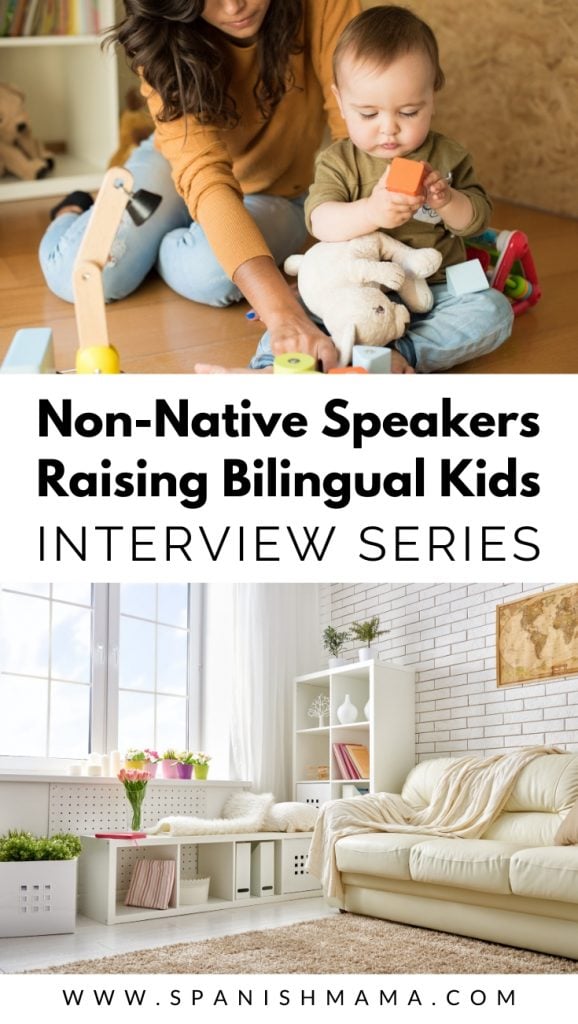
It’s such an honor to get a peek into how other families are making the bilingual connection happen. Hope you enjoyed it too!
